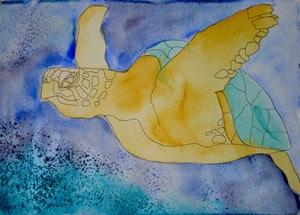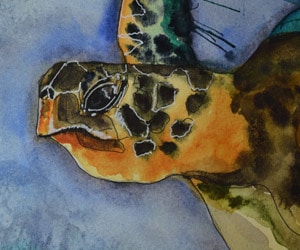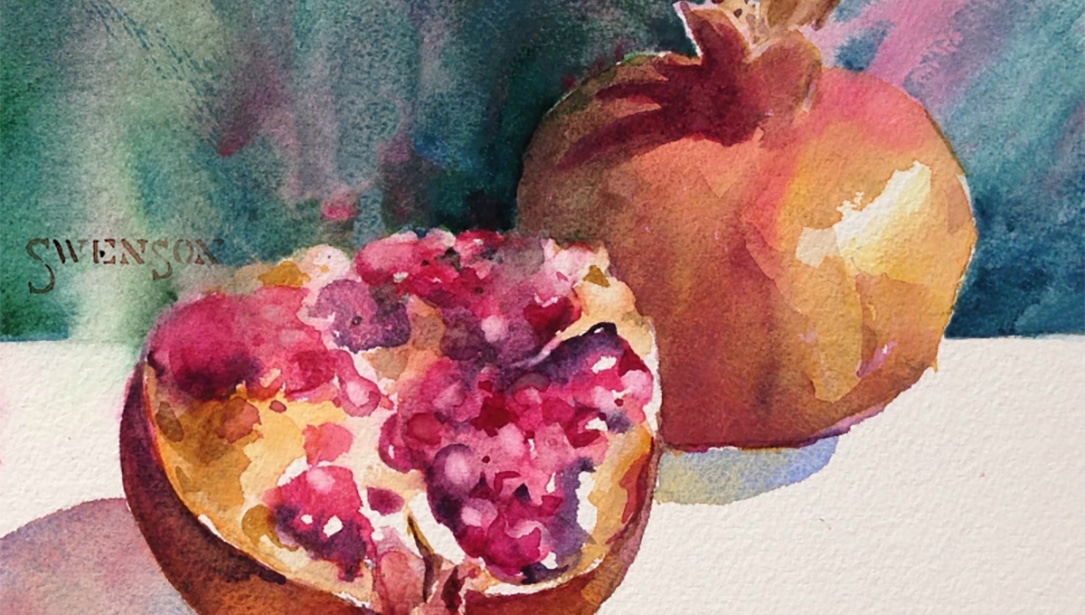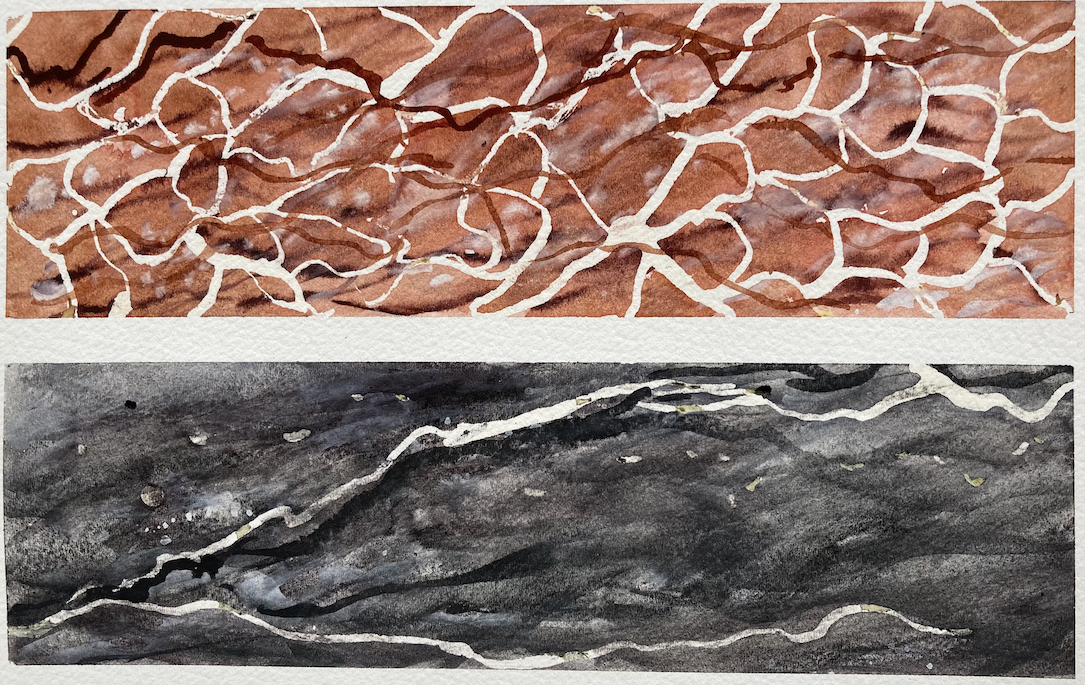My work has always centered on animals as they are my main source of strength, joy and inspiration. I love to capture their spirits on paper. Watercolor for me is the best choice of media with its organic qualities, pigments, depth and movement. My favorite paints are those with granulation that add that something extra to bring the animal alive. I gravitate to the PrimaTek™ line of colors, as their natural pigments create a look that is unique.
This summer I traveled to the magical island of Kauai. On my visit, I was blessed to run into a green sea turtle (Honu in Hawaiian) during my snorkeling adventures. Their soulful eyes and serene movement transported me to another time and place and I knew that they would be the subject of my work.
When I am going to work on a piece, the first thing I do is look for images to use as references. I collect many that show different angles, perspectives, and colors. Often times I do research on the animal as well to get an idea of their habitat and mannerisms.
Green sea turtles are some of the largest in the world, measuring up to 5 feet. They are named for the green tone of their skin. As herbivores, they feed on grasses and algae. They warm themselves by swimming close to the surface of the water and prefer shallow seas and reefs. Mating occurs every two to four years. Females lay a nest in the sand of 100 to 200 eggs, cover the nest with sand and return to the sea. In about 2 months, the eggs will hatch and the little ones try to make their way to the sea without getting eaten by birds and crabs. Green sea turtles are an endangered species.
Once I familiarize myself with the animal, I carry around the images with me and sketch them from different viewpoints in my journals. I make detailed studies of the eye which I believe is key to capturing the essence of any creature. I make note of what colors I use and create a palette for future use.
Poetry has always been a driving force behind my work and I often use words and phrases from my favorite poems. This element connects me to the animal on an emotional and spiritual level which I believe transfers onto the paper.
My book, No Excuses Watercolor, is about my approach to watercolor – intuitive, loose and fun. Most times I prefer to work in a wet-on-wet style so that the pigments can do their own thing organically. The following steps follow that same method.

Wet-On-Wet Technique
- Do a contour drawing of a sea turtle in waterproof ink on a piece of watercolor paper. I prefer to use 140lb cold press.
- Lay down a wash of Quinacridone Gold on the body and Amazonite Genuine on the shell.
- Create a background wash of French Ultramarine, Moonglow, and Phthalo Turquoise adding lots of water and dropping in different colors to get a mottled effect.
- Sprinkle areas of the background with salt and allow to dry before brushing off.
- Mist sections and drop in colors of Raw Umber, Green Apatite Genuine, Quinacridone Gold Deep, Sodalite Genuine, Bloodstone Genuine, Zoisite Genuine and Serpentine Genuine throughout the turtle.
- Continue in this fashion building from light to dark.
- Use Shadow Violet along the edges of the turtle and blend out with water to create depth.
- Puddle Sodalite Genuine and Phthalo Turquoise along the edges of the fins and blow to create drips.
- Use a black watercolor pencil to add details and depth to the eye and mouth.
- Use a white gel pen to add details to the face and fins.
- Add lines from a poem using the watercolor pencil.
- Mist the writing lightly with water.








